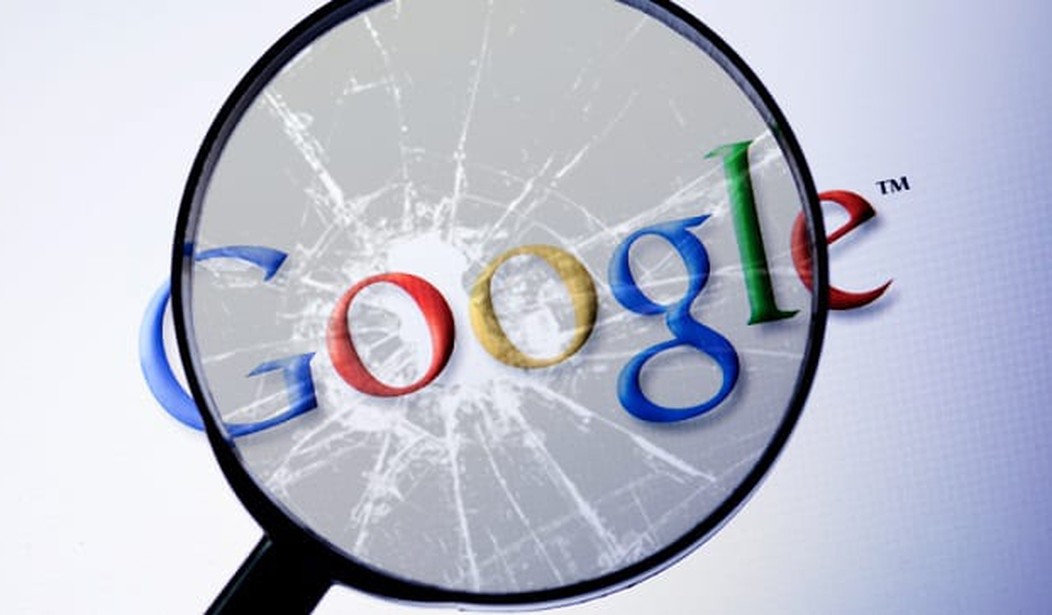On Tuesday, the Southern Poverty Law Center (SPLC) released its fall 2017 edition of the education magazine “Teaching Tolerance.” One of the articles in that magazine focused on the radicalization of the white supremacist Dylann Roof, who shot and killed nine members of a black church in Charleston, S.C., in 2015. The SPLC drew some rather odd conclusions from Roof’s history, however. The organization suggested that Google and Facebook were to blame for refusing to censor websites and for allowing an Internet algorithm to radicalize Roof.
“A dangerous coupling of digital media trends held Roof’s hand as he walked the path of radicalization,” Cory Collins wrote in “Teaching Tolerance.” Roof’s “first guide: Google’s search algorithm, which fails to find the middle ground between protecting free speech and protecting its users from misinformation.”
Yes, the SPLC just blamed Google for the results of an Internet search. “Google remains vulnerable to sites that peddle propaganda, especially those with heavy web traffic that utilize tricks of the SEO (search-engine optimization) trade,” Collins added.
“Google has claimed its autocomplete function filters out offensive terms—and asserted its updated search algorithm ‘will help surface more high quality, credible content’ and bump down sites with hate speech and disinformation,” the SPLC writer noted. But the SPLC is unsatisfied with these measures, which already suggest a terrifying trend toward censoring Internet speech.
“Google’s algorithm is deaf to ‘dog whistles,’ or the coded language of white nationalist messaging and pseudoscientific racism. As a result, it fails to stem the flow of disinformation to the top of its search results. Since Google changed its algorithm and autocomplete function, NPR found searches for ‘black on white crime’ continued to call up ‘multiple white supremacist websites,'” Collins noted.
The SPLC writer alleged that “this gateway to hate, provided inadvertently by Google, becomes more of a threat when coupled with a second phenomenon that can lead young people like Dylann Roof toward radicalization: the filter bubble that refuses to burst.”
“In short, search engines like Google and social media sites like Facebook take a user’s information and web history,” Collins explained. “With that information, online agency becomes a façade; behind the curtain, a formula controls what users see and steers them toward content that confirms their likes, dislikes and biases. Practically, this helps advertisers. Consequentially, it replaces the open internet of diverse perspectives with an open door to polarization and radicalization.”
The SPLC writer quoted James Hawdon, director of Virginia Tech’s Center for Peace Studies and Violence Prevention. “Each link, every time you click on something, it’s basically telling the algorithm that this is what you believe in. The next thing you know … you just get led into this rabbit hole of increasingly extreme ideas.”
Collins quoted Dylann Roof’s manifesto, noting that when the white supremacist researched deeper, “we now know he ended up on sites like Stormfront and The Daily Stormer, known peddlers of false stories and white supremacist ideologies.”
The SPLC writer noted that “before killing nine African Americans in Charleston, South Carolina’s Emanuel African Methodist Episcopal Church, Roof learned to hate in a classroom of his own making.”
While this sentence suggests Roof chose to radicalize himself, throughout the article Collins suggests that Roof had no agency. Thanks to Internet search algorithms, “online agency becomes a façade.” In other words, Roof may have killed nine innocent people, but it was Google and Facebook who were really to blame.
This suggestion is extremely dangerous in America’s current political climate, because following the white nationalist riots in Charlottesville, Va., many organizations have kicked online censorship into high gear.
It started innocuously enough. When the white supremacist website Daily Stormer published a particularly vile article about Heather Heyer, the woman who lost her life in Charlottesville, web hosting company GoDaddy announced it would stop hosting the site on the Internet. But Google actually went further — the search company canceled the Daily Stormer’s domain registration, effectively wiping them from the Internet.
White supremacist websites like Daily Stormer are evil, but banning them from the Internet opens a Pandora’s Box of Internet blacklisting.
Last month, ProPublica “reporter” Lauren Kirchner sent an email to conservatives like Robert Spencer and Pamela Geller that amounted to a threat. “I am contacting you to let you know that we are including your website in a list of sites that have been designated as hate or extremist by the American Defamation League or the Southern Poverty Law Center.”
The email continued, “We have identified several tech companies on your website: PayPal, Amazon, Newsmax, and Revcontent. Can you confirm that you receive funds from your relationship with those tech companies? How would the loss of those funds affect your operations, and how would you be able to replace them?”
As PJ Media’s Paula Bolyard paraphrased, “Nice website you’ve got there. It would be a shame if anything happened to it.”
These are not idle threats, and the SPLC’s own list of “hate groups” has spurred a campaign against mainstream conservative and Christian groups. In addition to racist organizations like the KKK, the SPLC “hate” list features Christian organizations like D. James Kennedy Ministries, the Family Research Council (FRC), Liberty Counsel, the American Family Association (AFA), and Alliance Defending Freedom (ADF), along with other groups like the American College of Pediatricians and the Center for Immigration Studies. It also lists Muslim reformer Maajid Nawaz and women’s rights activist Ayaan Hirsi Ali as “anti-Muslim extremists.” The group has admitted that qualifications to make the list are “strictly ideological.”
Various companies have used this list to blacklist nonprofit organizations.
At the end of August, Vanco Payments withdrew its service from the Ruth Institute, taking away that organization’s ability to process donations online.
In June, the charity navigation website GuideStar adopted the SPLC “hate group” list, marking each profile of the targeted organizations as a “hate group.” This action inspired the first of three lawsuits against the SPLC, launched by the Christian nonprofit Liberty Counsel.
In December, D. James Kennedy Ministries was denied access to Amazon’s charity connection service, Amazon Smile, because it was listed as a “hate group” by the SPLC. They also filed a lawsuit against the SPLC for defamation.
Last month, Google officially announced that it was partnering with the SPLC and ProPublica to launch the Documenting Hate News Index. When Google’s senior software engineer, James Damore, wrote a memo attacking Google for fostering an “intellectual echo chamber,” he was fired. This is the kind of bubble the SPLC is contributing to.
Similarly, Apple CEO Tim Cook announced that his company would give the SPLC $1 million, that it would match employee contributions, and that it would set up a system in iTunes software for consumers to donate directly.
Tragically, a recent poll found that nearly one in three Americans support such censorship against groups on the SPLC “hate” list.
“The list is getting used as though it’s some kind of law taken by Moses down from Mount Sinai,” Chris Gacek, FRC’s senior fellow for regulatory policy, told PJ Media.
This is particularly troubling, because the list is both deceptive and responsible for at least one terrorist attack.
The SPLC list briefly included Ben Carson as an “extremist,” and only took his name down following a public outcry. Recently, the group removed the innocent historic town of Amana Colonies from its “hate map.” Furthermore, the group seemed unable to decide why Muslim Maajid Nawaz was guilty of “anti-Muslim extremism.” It listed and removed many different reasons, one of which was Nawaz’s visit to a strip club for his bachelor party.
In justifying listing the Ruth Institute as an “anti-LGBT hate group,” the SPLC actually quoted the Catechism of the Catholic Church, leading to the suggestion that in order to be consistent, the group must label the largest Christian denomination in the world a “hate group.”
Perhaps the most egregious aspect of the SPLC list, however, is its inspiration of at least one domestic terror attack.
In August 2012, Floyd Lee Corkins II broke into the FRC, intending to kill everyone in the building and terrorize other organizations as well. He pled guilty to committing an act of terrorism and was sentenced to 25 years in prison. During an FBI interrogation, he said he targeted the FRC because of the SPLC “hate map.”
This past summer, James Hodgkinson opened fire at a Republican practice for the Congressional Baseball Game, nearly killing Rep. Steve Scalise (R-La.). Hodgkinson had “liked” the SPLC on Facebook, and the SPLC had repeatedly attacked Scalise as a white supremacist, even after he apologized for giving one speech to a white nationalist organization (and was attacked as a traitor by former KKK leader David Duke).
To Collins’ credit, he noted that “online radicalization has led to acts of violence” on “both edges of the political spectrum.” He also admitted that “before James Hodgkinson decided to target U.S. House Majority Whip Steve Scalise (R-Louisiana) and others at a baseball practice in Washington, DC, the content he shared on his Facebook page reflected an increasingly extreme disdain for Republicans.” Naturally, however, Collins left any mention of the SPLC out of this account.
In writing about how Google and Facebook should stop “peddling propaganda,” Collins seemed utterly blind to the fact that the SPLC’s own list fits nearly every definition of propaganda. Would he still call for Internet censorship if it were Left-wing sites being blacklisted? Would he be happier if Google blacklisted the Southern Poverty Law Center, whose “hate map” directly inspired a terror attack?
The problem with Internet blacklisting is the perennial problem with unchecked government power — who decides what is “legitimate” and what is “propaganda”? If the SPLC considers the Ruth Institute “propaganda” because it cites the Catechism of the Catholic Church, but does not list the Catholic Church as a “hate group,” why should anyone take its list seriously?
Internet censorship may start with hateful sites like Daily Stormer, but the SPLC has launched a movement to make sure it doesn’t end there. Dylann Roof’s Internet searches may have enabled his self-radicalization, but to blame Google and Facebook for his crazed mind is just adding fuel to the fire.
Internet algorithms do enable Americans to hide in their own bubbles and ignore other perspectives, and that is indeed unhealthy. But censorship is not the answer, whether it targets websites on the Right or those on the Left. Perhaps an organization which tries to hide the fact it inspired terrorism should be a bit more cognizant of painting a target on conservative websites.









Join the conversation as a VIP Member